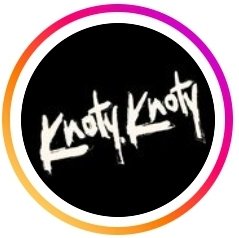Saudi Arabia’s fashion market is poised for explosive growth, according to the Saudi Fashion Commission’s “State of the Fashion Sector 2024” report released this week. The Saudi fashion industry, valued at $30 billion in 2023, is expected to reach $42 billion by 2028, with Fashion contributing 2.5 percent to the Kingdom’s GDP.

In an interview with WWD, Burak Cakmak, chief executive officer of the Saudi Fashion Commission, said the fast-paced growth of fashion is in sync with country’s broader strategy to become a global fashion and tourism destination. “The industry here was greenfield so we are seeing a hockey stick effect on growth, with this sudden acceleration, which is very exciting,” he said. “Being linked with Saudi Arabia’s Vision 2030 offers a huge opportunity,” said Cakmak, referring to the country’s strategic plan to diversify the economy and reduce dependence on oil.
The report highlights several key factors driving this robust growth. The rising participation of women in the workforce, which increased from 22 percent in 2018 to 34 percent in 2022, is boosting purchasing power and demand for diverse fashion products. And with 60 percent of the population under 30, young Saudis have changing fashion preferences that blend global trends with cultural heritage.
Cakmak noted this combination of tradition and modernity is a benchmark of Saudi fashion. “The blending of traditions with contemporary lifestyles in Saudi brings out diverse offerings by both international and local brands and enhancing retail experiences.”
The rise of local designers in Saudi Arabia has seen a significant surge, supported by initiatives from the Fashion Commission like the Saudi 100 brands program, which for the last three years has given Saudi designers access to mentorship, investment and both domestic and global visibility. “We are starting very humbly, recognizing that it’s a new venture for most of these brands, but we have a safe environment where we are able to give them the guidance, the support needed to be able to deliver it at the highest level possible.”
Last year saw the launch of two marquis fashion weeks in the Kingdom, Riyadh Fashion Week, as well as Red Sea Fashion Week. Cakmak emphasized the role of these events in shaping the industry’s structure. “It creates a calendar and a schedule for brands on how to operate their businesses and an entire ecosystem around it.”
Tourism has been significant factor in propelling the growth of the fashion sector, with inbound tourism projected to grow from 27 million visitors in 2023 to more than 75 million by 2030. Camak said this will significantly impact retail spending. “The investment in tourism and the number of tourists expected is quite significant,” he said. The Fashion Commission seized the opportunity to launch the region’s first ever resortwear, focused fashion week at the Red Sea last May.
“With so many hotel megaprojects opening, I think it’s great opportunity, especially because tourism here is very much targeting a premium luxury audience. There are few spots around the world positioned this way,” Cakmak said.
The retail landscape is also rapidly evolving, which is continuing to attract more international brands into the country. More than 20 new retail projects across the country will transform the shopping landscape over the next decade, adding 8 million square meters of gross leasable area. Cakmak said the Fashion Commission supports international brands exploring entry into the market with a data driven approach, explaining that in order to attract investments, the commission provides deep dive data on markets and sectors in the Kingdom.
One data point that has been a point of pride are the numbers pointing towards gender equality in fashion in Saudi Arabia, the report notes. Women now make up 52 percent of the fashion workforce in Saudi Arabia, with 90,000 new jobs for women in the last two years. This spans across various roles in the industry, from designers and entrepreneurs to retail professionals and executives.
As they look ahead to 2025, Cakmak said the goal is to “make sure we are touching every element of the value chain in fashion.” That also includes investing and expanding their a state-of-the-art product development studio supporting local designers with advanced manufacturing facilities and technologies. “This is one are we want to go deeper into: textiles and manufacturing,” Cakmak said.
